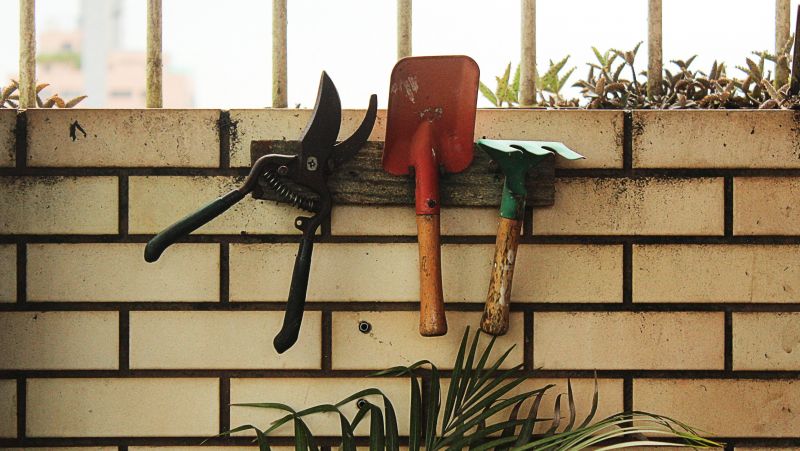That some hand tools are more, or indeed less, suited to tropical horticulture is something every gardener comes to acknowledge.
Where to begin? Ace of spades? Certainly a spade is key for general digging, for loosening soil, for digging planting holes and for transferring soil to a separate pile or wheelbarrow, if you have one. A round-point shovel is probably best for digging, a square-nosed one for picking up material. A fork is also essential: useful for breaking up clods of soil and better in clay or rocky soils. Ledges or “steps” at the top of the blade or tines are useful for placing your foot when you dig.
It may sound heinous to say so, but in Thailand I have found shovels and forks less serviceable than hoes and mattocks. It reflects the fact that, in my neck of the woods at least, there is little friable top-soil. Here, the mixture of clay and grit compacts in the heavy downpours of the monsoon and then hardens beneath the fierce tropic sun. Hard pan…
A hoe with a six-inch blade set perpendicular to the handle is better at both turning over soil and excavating holes for new plants. It is also extremely useful for uprooting weeds, many of which have tough, fibrous roots. It is certainly the favoured weapon of Thai gardeners. I will even confess to using a pickaxe where the earth is especially unyielding, though a narrow-bladed hoe may achieve a comparable effect.
Of the two main types of rake, consider a soil rake for levelling, covering rows of seed or creating a good tilth, and a leaf rake with closely spaced tines that curve downwards for dealing with grass clippings or leaves. Some rakes are nowadays made of flexible plastic. Make sure you wear sturdy gardening gloves when picking up leaves. All manner of beasties may be lurking underneath including millipedes, centipedes and even scorpions.
In your armoury of hand tools you should have a sharp, dished trowel, made, like your bigger implements, from forged steel. Avoid plastic ones. Use your trowel for planting, for weeding in small areas and for scooping soil or fertiliser. A knife is good for many tasks, including taking cuttings, dividing the roots of plants and opening bags of compost. A metal spike or dibble, another Thai favourite, is good for making holes in the iron-clad soil.
For woody shrubs and trees you will need tools for cutting and pruning. Plants grow at such a rate of knots in the tropics that a measure of human intervention is inevitable.
For shrubs, the answer is a pair of secateurs. Choose sturdy ones – the cheap ones rust and fall apart – and preferably the anvil rather than the overlapping type in which the straight blade cuts through the branch until it hits the anvil. For thicker branches you may need the extra leverage afforded by loppers which possess long handles up to a metre or so in length. They will cope with branches up to 3-4 centimetres thick, and are especially valuable for dealing with thorny shrubs such as bougainvilleas.
Even heavier duty branches will require a pruning saw. The modern fashion is for bow saws which have replaceable blades, necessary because the wood of tropical trees is often exceedingly hard, and saws will get blunt quickly. Always incise at a downward angle to allow moisture to drain away, and make a clean cut so as to avoid open wounds: a tree’s damaged tissue can easily become infected. Hedge shears are needed if you have a substantial hedge that needs clipping – say, bamboo, hibiscus, cristina or duranta.
Look after your tools. Clean after use and try to keep them sharp with a carborundum stone. In this climate, a smidgen of oil rubbed in with wire wool is a useful annual treatment.It is of course a matter of personal preference, but you may find other items indispensable; everything from a wheelbarrow down to plastic garden twine.
Patrick has been writing for thirteen years about gardening in Phuket and allied topics. If you have horticultural or environmental concerns, please contact him at drpaccampbell@gmail.com. Many of his earlier creative and academic publications can be found at Wordpress: Green Galoshes.








